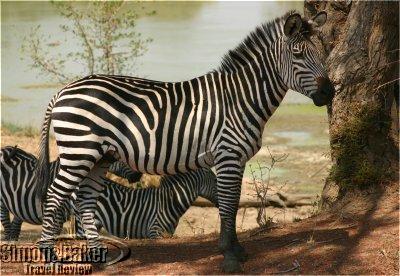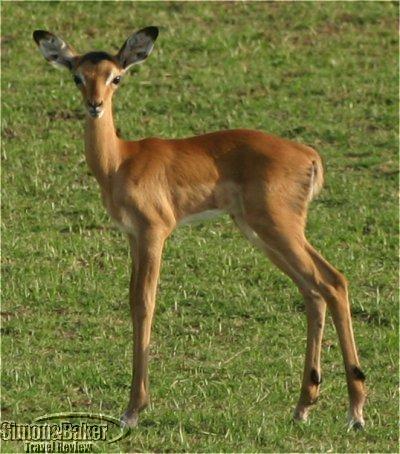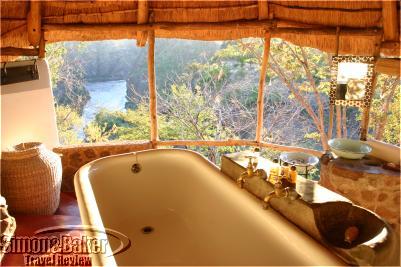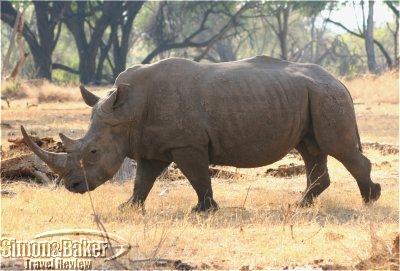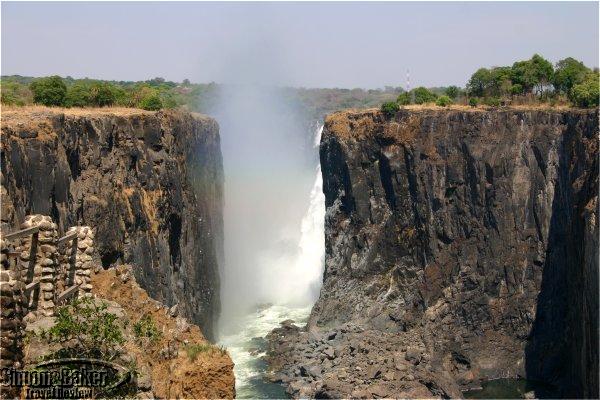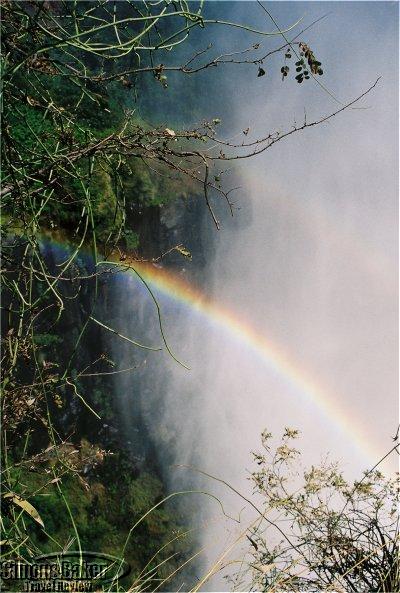
Victoria Falls is a well-known Zambian destination, which is located near the town of Livingstone. We enjoyed visiting the falls in the wet and dry seasons. This allowed us to see the falls when the river was at is highest and lowest stages. During the wet season the falls thundered at full power. In a local language Victoria Falls is known as Mosi O Tunya which means smoke that thunders, an apt description of the falls during the wet season. We were impressed with the wide range of activities that were available for tourists in the vicinity of Victoria Falls.
Zambia had a well run national park system. We visited the Mosi O Tunya and South Luangwa national parks. The Mosi O Tunya, where we saw white rhino, was the smaller of the national parks, but provided excellent wildlife viewing. The South Luangwa National Park had an incredible abundance of wildlife. We found game viewing there to be very exciting.
Currency The local currency was the Kwacha. We exchanged one U.S. dollar for about 4000 Zambia Kwachas.
Electrical Power System 220 volts
Health And Vaccinations There were no mandatory inoculations to enter Zambia when we visited. Our local health clinic, following Center for Disease Control guidelines, recommended visitor precautions for the following: AIDS, bilharzia , hepatitis, Malaria, rabies, sleeping sickness, tick bite fever, tetanus, and typhoid fever.
How To Get There We flew to Johannesburg and then on to Livingstone; on the way back we flew from Lusaka to Johannesburg and from there to the U.S. There were also European routes to Lusaka.
Location In Southern Africa bordering Angola, Democratic Republic of the Congo, Malawi, Mozambique, Namibia, Tanzania, Zimbabwe.
Measures Metric system
Money Issues Cities and airports had banking facilities for exchanging to local currencies. Remote locations lacked banking facilities, but camps were able to process credit cards for tips. We found that camps and airports would also take U.S. dollars.
Technology Telephone and fax service was available in major cities; cellular phone service was available near populated areas. Some of the camps we visited had satellite Internet connections.
Time G.M.T. plus two hours
Transportation Traveling long distances by road was a time consuming way to travel because the roads were not in good condition. We used charter air services to get to our remote locations.
Souvenirs Baskets, metal works of art, stone carvings, woodcarvings, tribal masks, ceramics, tapestry, woolen rugs, pottery and wall hangings. These items were locally made. In some cases we purchased items directly from the artisan or from the artisan’s relative.
When we were there Zambia had some excellent national parks. The Mosi O Tunya national park is located near the Falls where Zambia’s only white rhinos can be seen. South Luangwa National Park, 9050 square kilometers in size, was one of the greatest wildlife sanctuaries we have had the pleasure to visit. Few parks can match the diversity and richness of wildlife found at this park which is located in a remote and isolated wilderness. A large part of the park is isolated wilderness where no roads go in our out, so it remains somewhat pristine. The isolated region connected to the eastern park where most of the camps were located near the Luangwa river, which had the largest hippo population in the world. Bird watching was superb in the valley. At the end of the dry season when we visited, we saw hundreds of large water birds. One of the most beautiful water birds was the legendary crowned crane, which we saw congregating along the pans. Thornicraft’s giraffe (indigenous to this park), Crawshay’s zebras, and puku were some of the animals we saw there that are not often found in game parks. We also observed a wide variety of magnificent trees growing in the valley, including mopane, leadwood, winterthorn, palm, marula, tamarind and mighty baobab trees.
Photographs by Joni Johnson-Godsy
Would You Visit There Again? Yes
